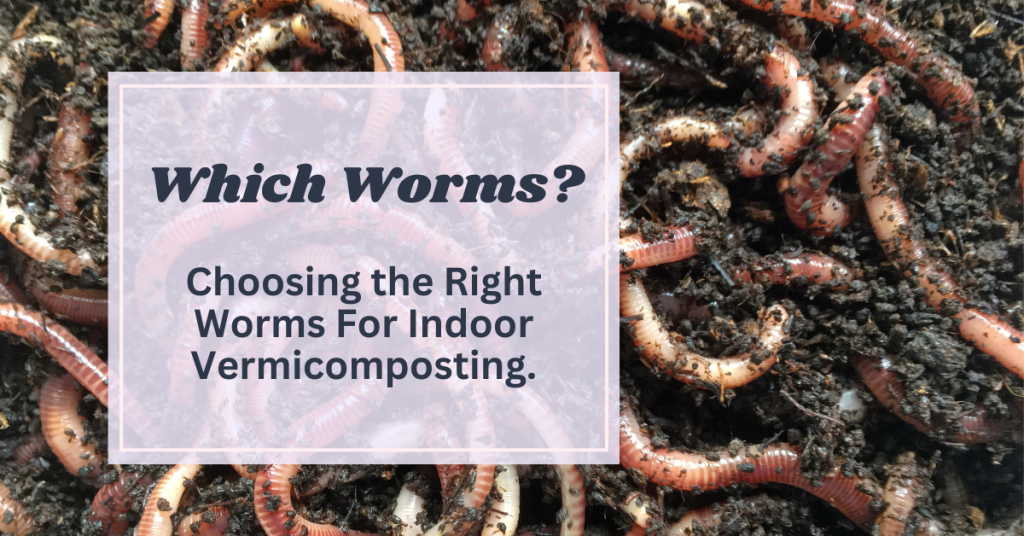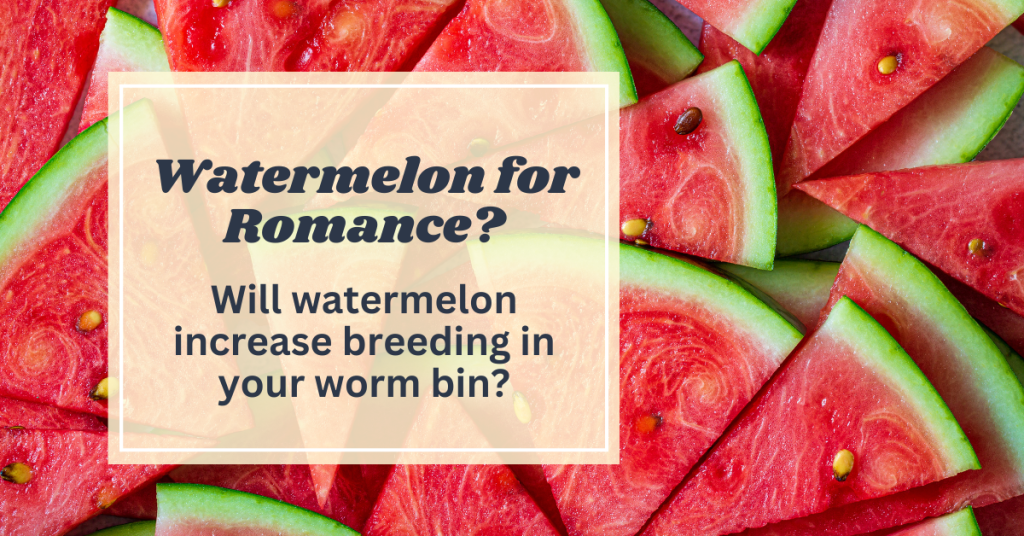How to Increase Breeding in Your Indoor Worm Bin
Please note that this post may contain affiliate links, which means we may earn a commission if you make a purchase through our links, at no extra cost to you. Learn more.
Increasing the breeding rate of your worms can improve the efficiency of your vermicomposting system.
A larger worm population means faster composting, more worm castings, and a healthier, balanced bin overall. Others may be interested in selling worms and thus the faster their worms breed the faster they can be sold. But for your worms to reproduce effectively, you need to provide the right conditions for them to thrive.
How Do Worms Reproduce?
Well, when two worms really like each other…
…just kidding! That’s not quite how is goes down!
Worm reproduction is fascinating and quite different from how most animals do it. Here’s a quick breakdown of how the process works:
Dual Reproductive Organs:
Worms, including red wigglers, have both male and female reproductive organs. In scientific terms, this is called being “hermaphroditic,” which means they can produce both eggs and sperm. However, despite this, they still require a partner to mate. When two worms meet, they align their bodies, and both exchange sperm. This process typically lasts about an hour.
Clitellum:
The clitellum, a thickened band around a worm’s body, plays a crucial role in reproduction. After mating, each worm will produce a mucus cocoon from the clitellum. The fertilized eggs are deposited into the cocoon, which then slips off the worm’s body and is left behind in the bedding.
Cocoons:
The cocoons, about the size of a grain of rice, harden over time and protect the developing eggs. Inside, baby worms (called hatchlings) will grow until they’re ready to emerge, usually between 23 to 30 days after the cocoon is laid, depending on temperature and conditions.
Hatchlings:
Once hatched, baby worms are fully functional but tiny and transparent. They start feeding immediately and will mature into reproductive adults in 2 to 3 months.
Key Terms:
- Dual reproductive organs: Having both male and female reproductive systems (in animals like worms).
- Clitellum: A band on a worm’s body used in reproduction.
- Cocoon: A protective case where fertilized worm eggs develop.
- Hatchlings: Baby worms that emerge from the cocoon.
Conditions That Can Affect Worm Reproduction
Now that we know how worms reproduce, let’s review some of the factors that can influence their breeding in a vermicomposting worm bin. For worms to thrive and multiply, the right conditions need to be maintained.
Temperature
Worms are highly sensitive to temperature. The ideal range for breeding is between 55°F and 77°F (13°C and 25°C). Temperatures that are too cold or too hot can slow down or completely halt reproduction. Indoor bins are often easier to regulate, making them perfect environments for stable worm populations.
Moisture Levels
Worms need moisture to breathe through their skin, which also helps support reproduction. However, overly wet conditions can drown them or attract pests, and overly dry conditions can dry them out. Keeping moisture levels just right—damp like a wrung-out sponge—ensures that worms stay healthy and productive.
How Feeding Your Worms Might Increase Breeding
What you feed your worms can also impact how quickly they reproduce. Providing the right types of food and keeping the bin well-maintained will encourage breeding.
High-Nutrient Foods
Worms thrive on organic matter that is rich in nutrients, such as fruit and vegetable scraps, coffee grounds, and grains. These types of foods promote a healthy, microbe-rich environment, which in turn supports worm health and reproduction. Avoid foods that could cause harm, like salty or processed foods, as these can disturb the bin’s balance.
Quantity Matters
Overfeeding or underfeeding can both be problematic. Too much food can lead to a build-up of ammonia and other harmful gases, while too little food may slow reproduction as the worms won’t have the energy to breed. Finding the right balance of food volume, especially in an indoor worm bin, helps keep everything running smoothly.
Anecdotal Evidence: Some people find that feeding their worms food that encourages “worm balls” to form (think avocados, banana peels) can help increase breeding, simply because it encourages the worms to be in close proximity of one another.
Space and Population Density
The amount of space and population density in your worm bin can significantly affect breeding. Worms tend to reproduce more when they have adequate space to move around, but overcrowding can slow down breeding.
Enough Space for Growth
In a small, indoor worm bin, worms need room to grow and reproduce. When a bin becomes too crowded, worms will naturally slow down their breeding, as the environment becomes less hospitable. Regularly monitoring the population and expanding the bin or harvesting castings can help ensure there’s enough space for breeding to continue.
Population Balance
You don’t want to overcrowd your bin, but having too few worms can also be a problem. If your worm population is too small, reproduction will be slower simply because there are fewer worms available to breed. A good balance is key to encouraging consistent reproduction.
Worm Bin Maintenance for Optimal Breeding
Regular maintenance of your indoor worm bin is essential for creating the best environment for worm reproduction. Keeping the bin in top shape helps maintain optimal conditions for your worms to breed efficiently.
Aeration and Bedding
Worms need oxygen to survive and reproduce, so keeping the bin well-aerated is crucial. Fluffing the bedding and turning the contents of the bin every so often will help maintain airflow. It’s also important to provide fresh bedding like shredded paper, cardboard, or coconut coir to give the worms a comfortable place to breed.
Removing Excess Castings
As worms break down organic material, they produce nutrient-rich castings, but too much of it can create an acidic environment that hampers breeding. Harvesting castings regularly ensures the bin remains healthy and suitable for reproduction.
Key Takeaways for Increasing Breeding in Your Worm Bin
Encouraging faster reproduction in your indoor worm bin requires paying close attention to the conditions in which your worms thrive.
Maintaining the right temperature and moisture levels, feeding high-quality organic matter, and ensuring ample space are all critical factors in boosting worm reproduction. Regular bin maintenance—such as providing fresh bedding, aerating the bin, and removing excess castings—will create the ideal environment for healthy, active worms that are ready to breed.
By following these tips, you can optimize your indoor vermicomposting setup for faster and more efficient worm reproduction.









